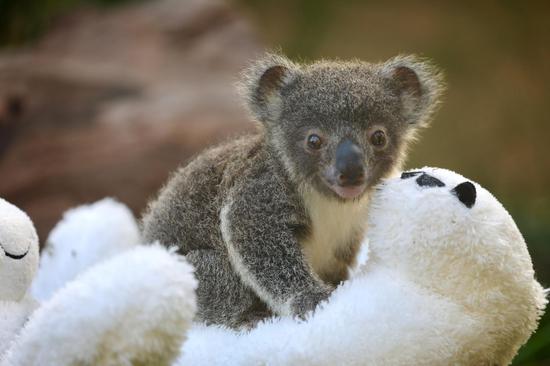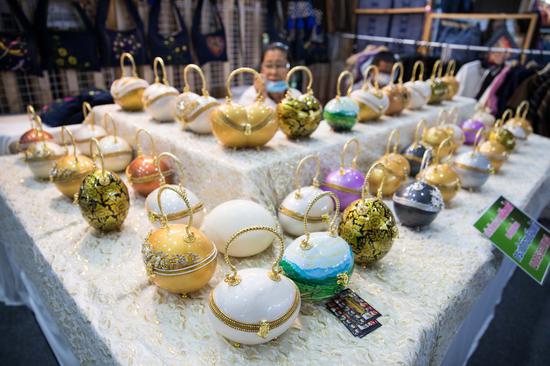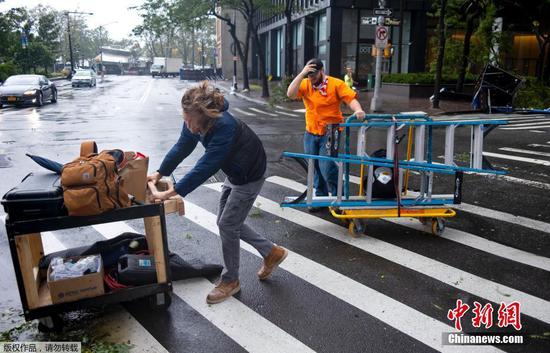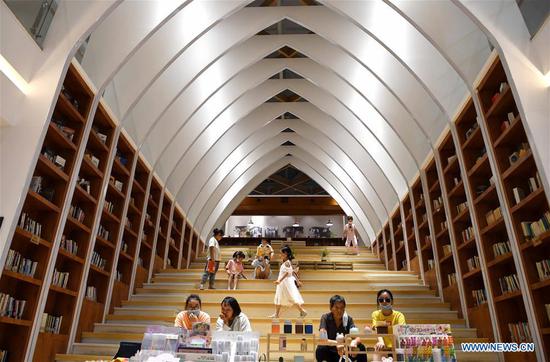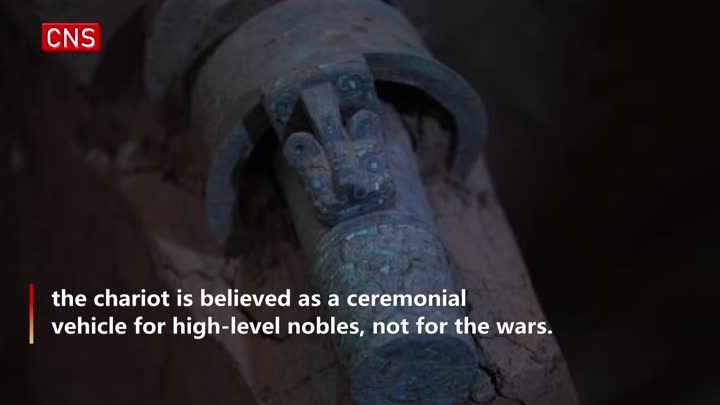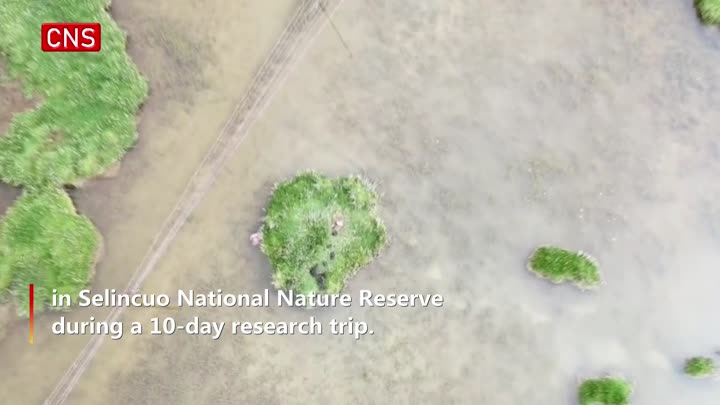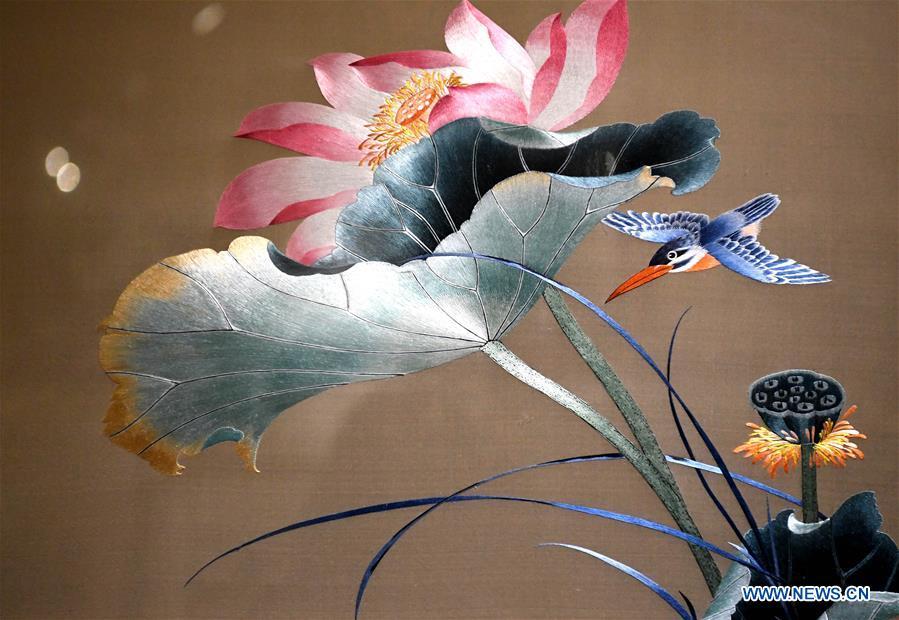
Part of an embroidery work made by Wang Suhua is seen at her company in Kaifeng City, central China's Henan Province, July 30, 2020. Wang Suhua, 85, a national-level intangible cultural heritage inheritor of bian embroidery, has been doing the work since 1957. By collecting ancient bian embroidery works and sorting out traditional embroidery skills in Song Dynasty, Wang and her workmates created more than ten new ways of stitches, and successfully made a bian embroidery masterpiece of the famous ancient painting "Along the River during the Qingming Festival" in 1959. In order to better pass down the craft, Wang set up a company after retiring in 1990. Over the past 30 years, she has trained more than 1,000 people for free who were impoverished, disabled or laid-off. (Xinhua/Li An)
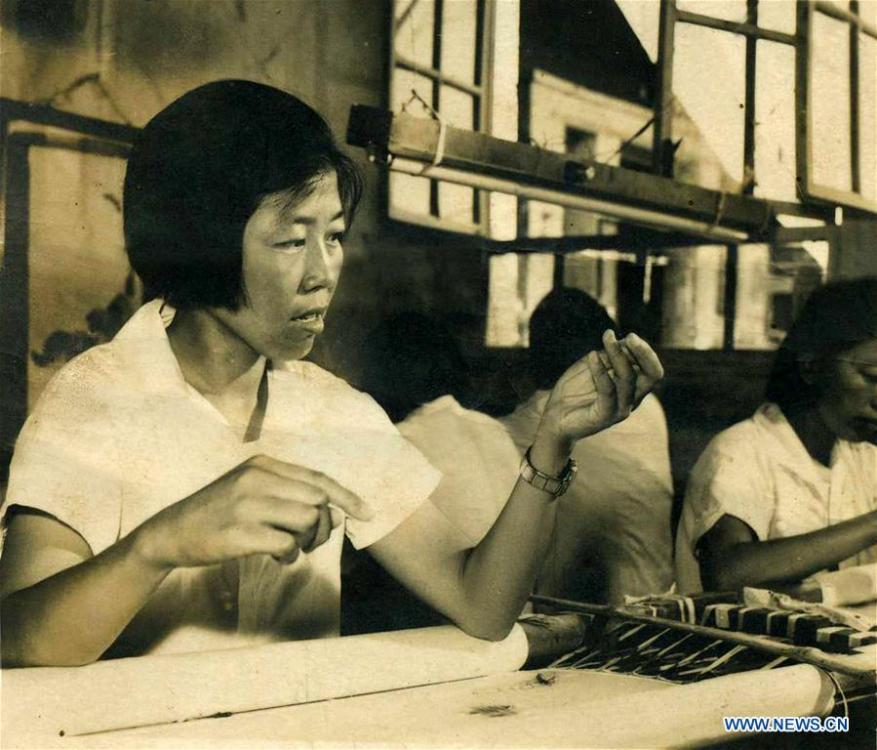
File photo taken in 1958 shows Wang Suhua working at the Kaifeng bian embroidery factory in Kaifeng City, central China's Henan Province. Wang Suhua, 85, a national-level intangible cultural heritage inheritor of bian embroidery, has been doing the work since 1957. By collecting ancient bian embroidery works and sorting out traditional embroidery skills in Song Dynasty, Wang and her workmates created more than ten new ways of stitches, and successfully made a bian embroidery masterpiece of the famous ancient painting "Along the River during the Qingming Festival" in 1959. In order to better pass down the craft, Wang set up a company after retiring in 1990. Over the past 30 years, she has trained more than 1,000 people for free who were impoverished, disabled or laid-off. (Xinhua)
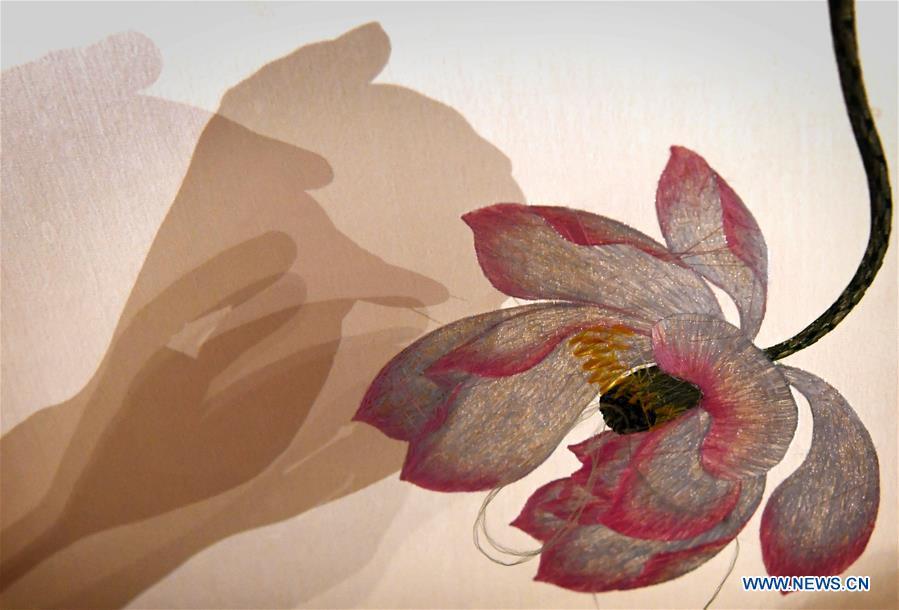
Liu Donghong, an apprentice of Wang Suhua, makes bian embroidery at Wang's company in Kaifeng City, central China's Henan Province, July 30, 2020. Wang Suhua, 85, a national-level intangible cultural heritage inheritor of bian embroidery, has been doing the work since 1957. By collecting ancient bian embroidery works and sorting out traditional embroidery skills in Song Dynasty, Wang and her workmates created more than ten new ways of stitches, and successfully made a bian embroidery masterpiece of the famous ancient painting "Along the River during the Qingming Festival" in 1959. In order to better pass down the craft, Wang set up a company after retiring in 1990. Over the past 30 years, she has trained more than 1,000 people for free who were impoverished, disabled or laid-off. (Xinhua/Li Jianan)
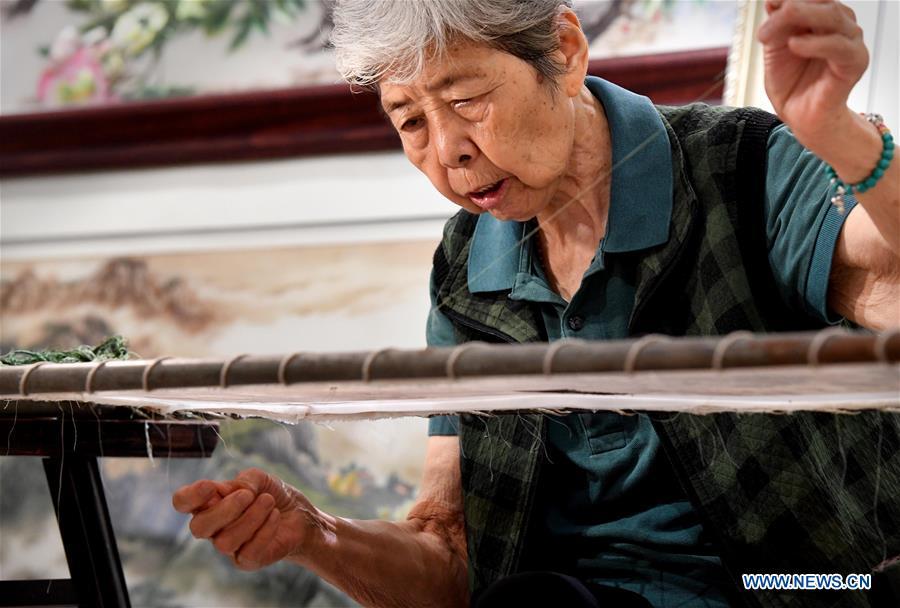
Wang Suhua makes bian embroidery at her company in Kaifeng City, central China's Henan Province, July 30, 2020. Wang Suhua, 85, a national-level intangible cultural heritage inheritor of bian embroidery, has been doing the work since 1957. By collecting ancient bian embroidery works and sorting out traditional embroidery skills in Song Dynasty, Wang and her workmates created more than ten new ways of stitches, and successfully made a bian embroidery masterpiece of the famous ancient painting "Along the River during the Qingming Festival" in 1959. In order to better pass down the craft, Wang set up a company after retiring in 1990. Over the past 30 years, she has trained more than 1,000 people for free who were impoverished, disabled or laid-off. (Xinhua/Li An)
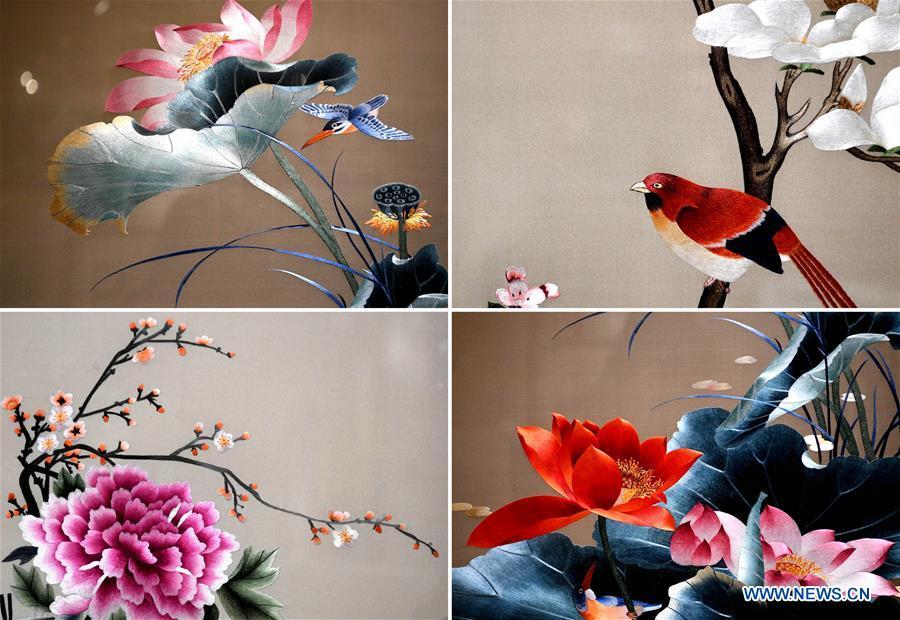
Combination photo taken on July 30, 2020 shows parts of embroidery works by Wang Suhua and her apprentices at Wang's company in Kaifeng City, central China's Henan Province. Wang Suhua, 85, a national-level intangible cultural heritage inheritor of bian embroidery, has been doing the work since 1957. By collecting ancient bian embroidery works and sorting out traditional embroidery skills in Song Dynasty, Wang and her workmates created more than ten new ways of stitches, and successfully made a bian embroidery masterpiece of the famous ancient painting "Along the River during the Qingming Festival" in 1959. In order to better pass down the craft, Wang set up a company after retiring in 1990. Over the past 30 years, she has trained more than 1,000 people for free who were impoverished, disabled or laid-off. (Xinhua/Li An)
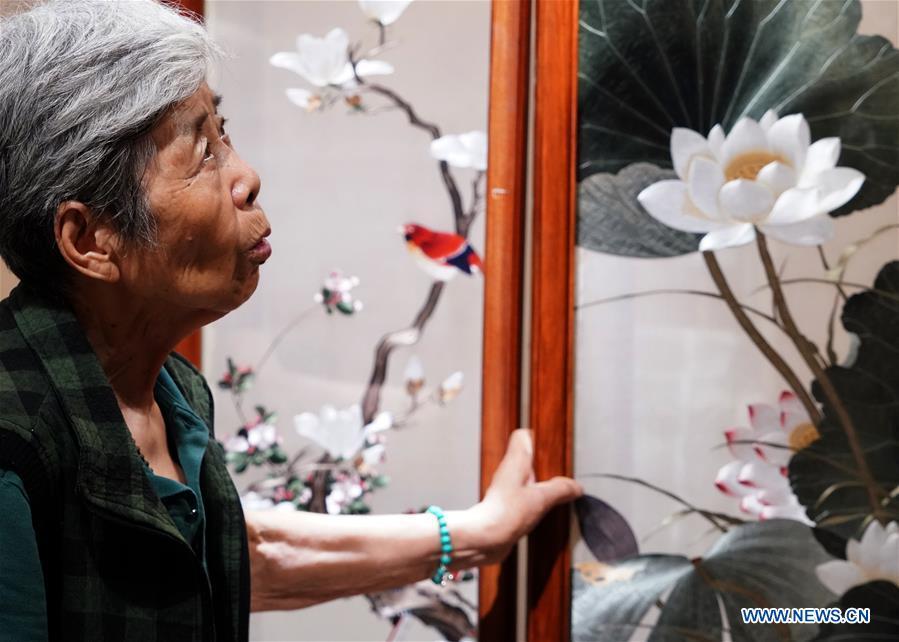
Wang Suhua watches an embroidery work at her company in Kaifeng City, central China's Henan Province, July 30, 2020. Wang Suhua, 85, a national-level intangible cultural heritage inheritor of bian embroidery, has been doing the work since 1957. By collecting ancient bian embroidery works and sorting out traditional embroidery skills in Song Dynasty, Wang and her workmates created more than ten new ways of stitches, and successfully made a bian embroidery masterpiece of the famous ancient painting "Along the River during the Qingming Festival" in 1959. In order to better pass down the craft, Wang set up a company after retiring in 1990. Over the past 30 years, she has trained more than 1,000 people for free who were impoverished, disabled or laid-off. (Xinhua/Li Jianan)
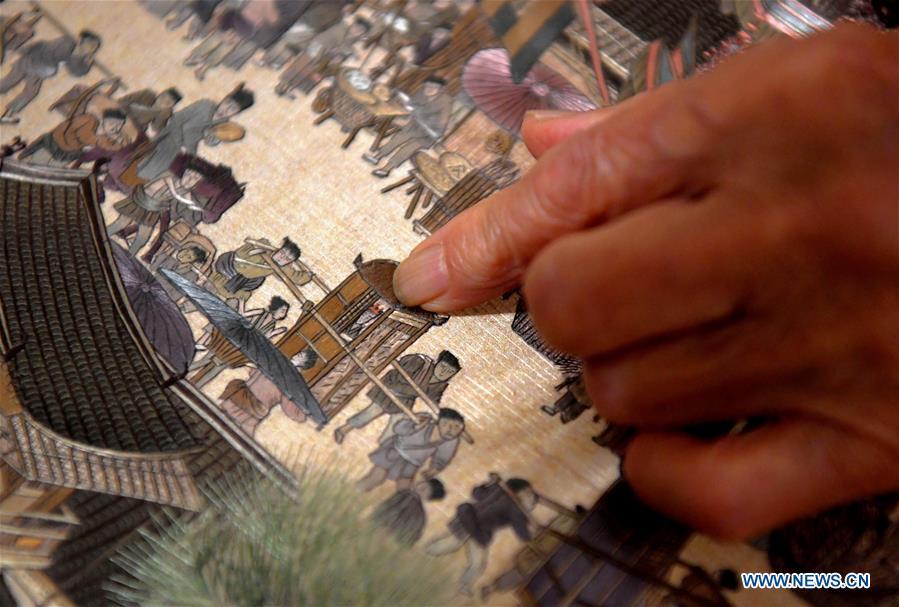
Wang Suhua points out a part of an embroidery work made by her apprentice that needs to be revised at her company in Kaifeng City, central China's Henan Province, July 30, 2020. Wang Suhua, 85, a national-level intangible cultural heritage inheritor of bian embroidery, has been doing the work since 1957. By collecting ancient bian embroidery works and sorting out traditional embroidery skills in Song Dynasty, Wang and her workmates created more than ten new ways of stitches, and successfully made a bian embroidery masterpiece of the famous ancient painting "Along the River during the Qingming Festival" in 1959. In order to better pass down the craft, Wang set up a company after retiring in 1990. Over the past 30 years, she has trained more than 1,000 people for free who were impoverished, disabled or laid-off. (Xinhua/Li Jianan)
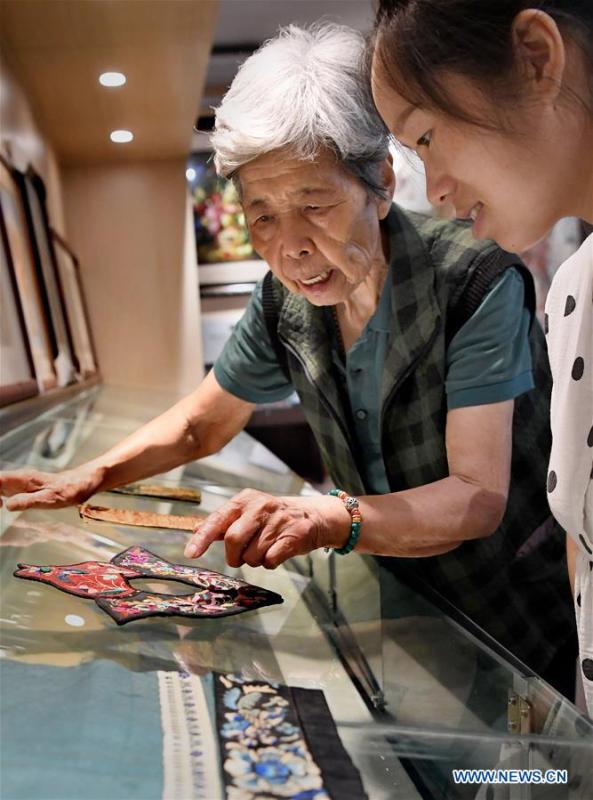
Wang Suhua introduces stitches on the ancient embroidery work at her company in Kaifeng City, central China's Henan Province, July 30, 2020. Wang Suhua, 85, a national-level intangible cultural heritage inheritor of bian embroidery, has been doing the work since 1957. By collecting ancient bian embroidery works and sorting out traditional embroidery skills in Song Dynasty, Wang and her workmates created more than ten new ways of stitches, and successfully made a bian embroidery masterpiece of the famous ancient painting "Along the River during the Qingming Festival" in 1959. In order to better pass down the craft, Wang set up a company after retiring in 1990. Over the past 30 years, she has trained more than 1,000 people for free who were impoverished, disabled or laid-off. (Xinhua/Li An)










